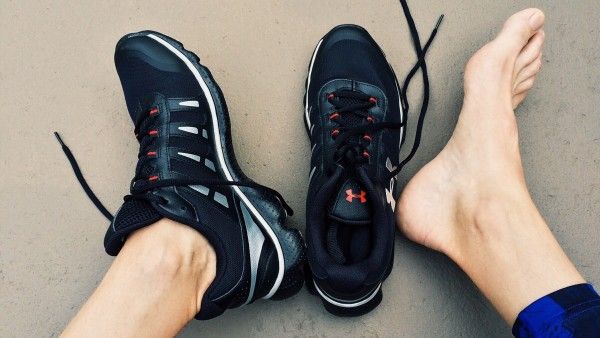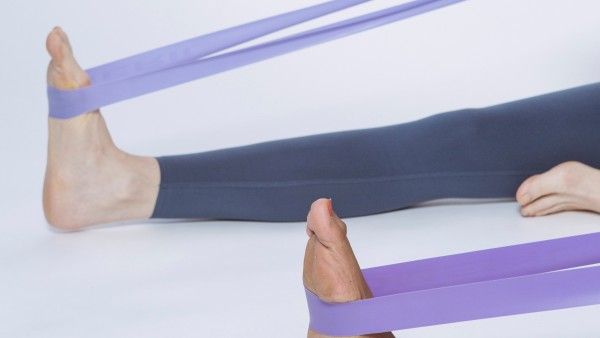Just In
- 4 hrs ago

- 5 hrs ago

- 9 hrs ago

- 10 hrs ago

Don't Miss
- Sports
 IPL 2024: List of Centuries By CSK Batters As Ruturaj Gaikwad Hits Maiden Ton As Captain
IPL 2024: List of Centuries By CSK Batters As Ruturaj Gaikwad Hits Maiden Ton As Captain - Education
 Telangana Inter Manabadi 1st and 2nd Year Results 2024 to be Declared Tomorrow
Telangana Inter Manabadi 1st and 2nd Year Results 2024 to be Declared Tomorrow - News
 Explained | Which Cancer-Causing Chemical Was Found Amid MDH, Everest Row?
Explained | Which Cancer-Causing Chemical Was Found Amid MDH, Everest Row? - Finance
 1:5 Split Soon: Rs 2,300 Defence Stock To Split Into Five Shares, Rs 400 Cr Fundraising Too; Hits 52-Week High
1:5 Split Soon: Rs 2,300 Defence Stock To Split Into Five Shares, Rs 400 Cr Fundraising Too; Hits 52-Week High - Movies
 Digangana Suryavanshi Gets Ready For Her Next Film 'Krishna From Brindavanam'- See Mahurat Pic
Digangana Suryavanshi Gets Ready For Her Next Film 'Krishna From Brindavanam'- See Mahurat Pic - Automobiles
 Chrysler Pacifica Marks Seven Years As Most Awarded Minivan With New Campaign
Chrysler Pacifica Marks Seven Years As Most Awarded Minivan With New Campaign - Technology
 Xiaomi Robot Vacuum Cleaner S10, Handheld Garment Steamer, and Redmi Buds 5A Launched in India
Xiaomi Robot Vacuum Cleaner S10, Handheld Garment Steamer, and Redmi Buds 5A Launched in India - Travel
Kurnool's Hidden Gems: A Guide To Exploring India's Lesser-Known Treasures
What Your Feet Say About Your Health: Know About The 15 Warning Signs And Ways To Keep Your Feet Healthy
From pesky foot pain to more serious conditions, such as numbness, your feet sometimes show symptoms of diseases before any other part of your body [1]. You (well, not you, but a doctor) can detect most of the health conditions such as diabetes and many nutritional deficiencies by taking a close look at your feet. Just a 20-second look at your feet can diagnose many diseases [2].
The foot is a complex body part, but one that is often overlooked, as many experts have noted. Despite the fact that people usually do not pay attention to their feet until they have injured, sprained, or broken something, our feet can provide a great deal of information about our overall health.
Our foot contains 33 joints and 100 muscles, ligaments and tendons. Feet also have a network of nerves and blood vessels that connect to the heart, brain and spinal cord. Foot cramps, loss of toe hairs, foot wounds, cold feet, shape changes of toes, etc, can all reflect some kind of disease [3][4].
In this article, we will talk about some of the common foot problems and related diseases. If you experience such a problem, consult a doctor to rule out any serious health complications.
Foot problems that are easily not resolved can be a sign of many unexpected diseases. Here are some foot problems that may be a warning sign of many underlying diseases. Have a look at what your feet say about your health.
The article contains the following:
1. Warning Signs Your Feet Shows
- Swelling and pain
- Feet cramps
- Cold feet
- Burning Feet
- Thick toenails
- Swollen feet
- Heel pain etc.
2. Tips To Keep Your Feet Healthy
3. When To See A Doctor

1. Swelling, Pain And Redness Of Toes
The accumulation of uric acid crystals inside the toe can cause pain, swelling and redness. This happens due to high uric acid levels in the blood and medically this condition is known as gout. However, arthritis and infection can also lead to pain in the toes [5]. If you experience pain throbbing in the ball of your foot and radiating to the toes, you may be suffering from Morton's neuroma, a thickening of tissue around a nerve, which is typically located between the third and fourth toes. Women are eight to ten times more likely to suffer from this disease than men.
2. Change In The Shape Of Toes
Although this may sound quite weird, it happens - your toe shape can change. If there is a change in the shape of the toes and toenails get curved, you must consider getting a check-up of the heart and lungs [6]. This occurs due to less oxygen supply in the blood. This may be accompanied by other symptoms such as breathing problems and changes in the heart rate. Toenail changes may also occur because of Crohn's disease.
3. Loss Of Toe Hair
A sudden loss of toe hairs may indicate a decreased level of blood circulation, resulting in weak hair and then hair loss. This can cause vascular diseases, which occur due to high cholesterol levels that cause stiffening and narrowing of the blood vessels. This results in decreased pumping of the blood by the heart to the extremities, causing toe hair loss and feeling of no pulse in the feet [7].
4. Feet Cramps
Pain and cramps in the feet may be an alarming sign of malnutrition, nerve issues, or also a sign of dehydration. For this, you need to take foods rich in calcium, magnesium and potassium. Consume a healthy amount of water, and if the pain is persisting, consult a doctor for proper diagnosis [8].
5. Cold Feet
In the case of an underactive thyroid gland, there will be cold feet accompanied by hair loss, dry skin and vertigo. For this, you need to go in for a thyroid functioning test, if you notice certain other symptoms as well. Cold feet also mean poor blood circulation due to smoking, high blood pressure and heart diseases [9].

6. Yellow And Thick Toenails
This could indicate a fungal infection inside the toenail. Yellow and ugly nails can also be accompanied by bad-smelling nails that can turn dark in colour. It is a painless condition initially, but later the infection may spread to the other toenails and fingernails [10].
7. Slow Healing Of Feet Wounds
In the case of diabetes, there is reduced blood flow to the body extremities such as feet, leading to damage and death of cells, hence called necrosis [11]. Initially, it appears as a wound and doesn't heal easily, leading to infective pus and further complications. If wounds don't heal soon, it is best to consult a doctor for a diabetes check.
8. Red, White And Blue Toes
As a result of Raynaud's disease (a rare disorder of the blood vessels), toes may turn white, then blue, then return to their natural tone after reddening again. Vasospasms, or sudden narrowing of the arteries, are the cause. Changes in temperature or stress can trigger vasospasms, which generally do not cause any serious health problems. Raynaud's disease may also be associated with rheumatoid arthritis, Sjogren's syndrome or thyroid disorders [12].
9. Heel Pain
One of the most common causes of heel pain is plantar fasciitis, an inflammation where this long ligament attaches to the heel bone. You may experience the sharpest pain when first waking up and placing pressure on your foot. In addition to tendonitis, arthritis, excessive exercise, and poorly fitting shoes can cause heel pain. Other causes may include bone spurs on the bottom of the heel, bone infections, tumours, or fractures [13].
10. A Change In The Way You Walk
In some cases, the first indication of a problem may be a change in your walking pattern, such as a wider gait or a tendency to drag your feet. It may be caused by the gradual loss of sensation in your feet as a result of peripheral nerve damage. Approximately 30 per cent of these cases are linked to diabetes. Furthermore, nerve damage can occur as a result of infection, vitamin deficiency, and alcoholism. Other possible causes of foot-dragging include problems with the brain, spinal cord, or muscles [14].

11. Swollen Feet
Usually, this is only a temporary inconvenience caused by standing too long or taking a long flight, especially when pregnant. In other cases, swollen feet may indicate a serious medical condition. This condition may be caused by poor circulation, problems with the lymphatic system, or a blood clot. Underactive thyroid or kidney disorders can also cause swelling. See your physician if you experience persistent swelling of the feet [15].
12. Burning Feet
The burning sensation in the feet is common in diabetics with peripheral nerve damage. It can also be caused by a vitamin B deficiency, athlete's foot, chronic kidney disease, poor circulation in the legs and feet (peripheral arterial disease), and hypothyroidism [16].
13. Itchy Feet
Itchy, scaly skin is indicative of an athlete's foot, a common fungal infection. Itching may also result from a reaction to chemicals or skincare products, known as contact dermatitis. If the skin on your itchy feet is thick and scaly, you may have psoriasis, an overreaction of your immune system [17].
14. Foot Spasms
Acute, sudden pain in the foot can be indicative of a muscle spasm or cramp that can last for several minutes. Overwork and muscle fatigue are common reasons. It may also be caused by poor circulation, dehydration, or an imbalance of potassium, magnesium, calcium, or vitamin D in the body. Changes in hormone levels during pregnancy or thyroid disorders may also play a part [18].
15. A Dark Spot
A melanoma, the most dangerous form of skin cancer, can develop in areas that are not regularly exposed to sunlight. Melanoma can even be found under the nail, where it may appear as a black spot [19].

Easy Tips To Keep Your Feet Healthy
- Avoid wearing tight shoes.
- Do not share your shoes.
- Do not share pedicure instruments.
- Avoid polishing discoloured nails. Allow the nails to breathe and address the underlying problem.
- Avoid shaving calluses.
- Do not pull out an ingrown nail.
- Give your feet a good massage.
- Roll a tennis ball underneath your feet.
- Use a vinegar foot soak to soothe any irritation.

On A Final Note…
Changes in your feet can be accompanied by some other symptoms. For example, in the case of diabetes, you may experience soreness and wounds on feet that won't heal and also increased thirst, urination and appetite, etc. If you think something needs medical attention, don't think twice, go visit your doctor.
-
 health5 Signs Your Kidneys Need Attention: Don't Ignore These Warning Signals
health5 Signs Your Kidneys Need Attention: Don't Ignore These Warning Signals -
 wellnessSatish Kaushik, Aged 66, Dies Of A Heart Attack: Know Warning Signs Of Heart Attack In People Over 60
wellnessSatish Kaushik, Aged 66, Dies Of A Heart Attack: Know Warning Signs Of Heart Attack In People Over 60 -
 wellness6 Common Warning Signs Your Feet Can Show About Your Health
wellness6 Common Warning Signs Your Feet Can Show About Your Health -
 healthHow To Keep Feet Hot During Winters: 12 Tips That Will Tackle Cold Feet Issues And Make Your Feet Thank You
healthHow To Keep Feet Hot During Winters: 12 Tips That Will Tackle Cold Feet Issues And Make Your Feet Thank You -
 health5 Reasons Why Your Feet Become Numb Quick
health5 Reasons Why Your Feet Become Numb Quick -
 beautyFoot Packs To Get Rid Of Dry Foot Skin
beautyFoot Packs To Get Rid Of Dry Foot Skin -
 wellnessDid You Know These Benefits Of Massaging Feet Before Bedtime?
wellnessDid You Know These Benefits Of Massaging Feet Before Bedtime? -
 diabetes12 Safe And Effective Tips For Diabetic Foot Care
diabetes12 Safe And Effective Tips For Diabetic Foot Care -
 body careHow To Use Pumice Stone To Heal Dry And Cracked Feet
body careHow To Use Pumice Stone To Heal Dry And Cracked Feet -
 disorders cureWhat Are Corns And Calluses? Causes, Symptoms, Risk Factors, Treatments And Prevention
disorders cureWhat Are Corns And Calluses? Causes, Symptoms, Risk Factors, Treatments And Prevention -
 body care8 Wonderful Tips To Take Care Of Your Feet This Winter Season
body care8 Wonderful Tips To Take Care Of Your Feet This Winter Season -
 skin careUse These Amazing Essential Oil Remedies To Treat Dry Feet
skin careUse These Amazing Essential Oil Remedies To Treat Dry Feet


 Click it and Unblock the Notifications
Click it and Unblock the Notifications



